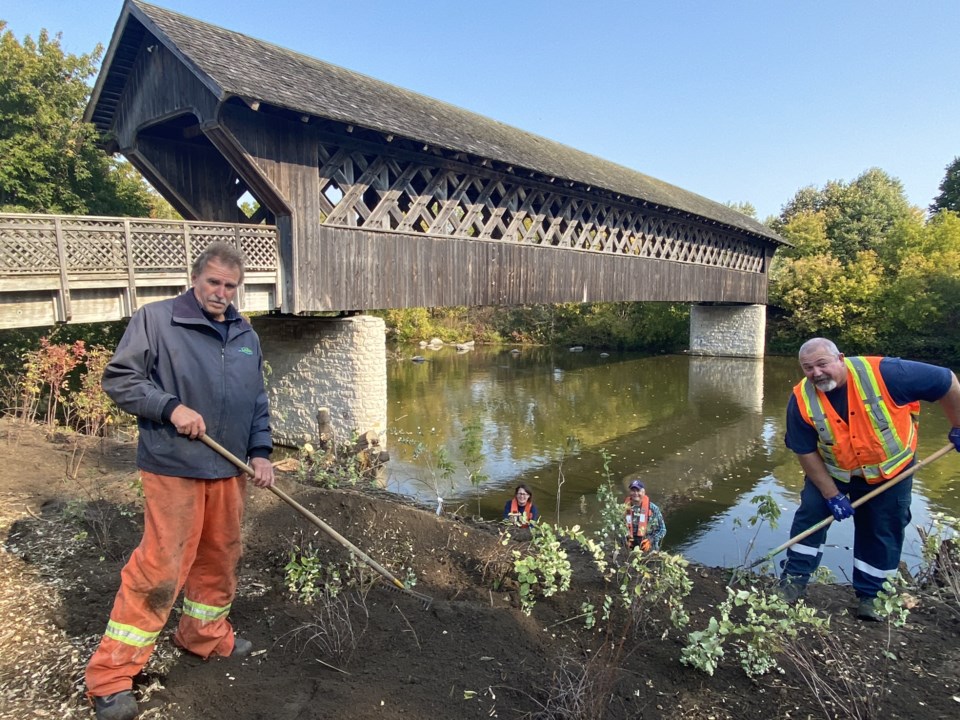If you like the #GlowGuelph initiative that has transformed Guelph’s covered bridge into a radiant spectacle, wait to see how the area will blossom next year.
In the spring of 2021, expect to see serviceberries, dogwood, snowberries and fragrant sumac blooming alongside the bridge — all of which are native to Ontario, particularly around Guelph.
“It is exciting to have that viewscape and it's going to look even better as the shrubs we planted in the area come out next year,” said Dave Beaton, manager of parks at the City of Guelph.
He said those specific plant species were selected because of their low landscape which will not obscure the view of the bridge in the future.
“They're going to be a nice highlight to the bridge,” said Beaton.
This enhancement is part of the Bee City initiative in which the city is removing invasive plant species beside the bridge and replacing it with a shrub bed of pollinator plants.
“The removal of the invasives has been a part of our program over the past couple of years and this was an opportunity to deal with buckthorn and other invasives and an opportunity to change the habitat to change the confluence of the rivers.”
“These will enhance the habitat at the confluence of Guelph’s rivers and the hub of Guelph’s trails,” said Beaton.
The city had initially planned to plant the pollinators last November, but an unexpected and early ice storm rained on those plans.
Beaton said the work was on hold due to the pandemic but rescheduled to occur over the past two weeks to take advantage of the closures necessitated by the installation of #GlowGuelph.
Just before Thanksgiving, the city added 120 shrubs on the south side of the bridge and removed the buckthorn and broken Manitoba maple species. Next week, it plans to plant 100 shrubs on the north side.
Beaton said when Guelph Tourism was searching for a place to apply funding in order to enhance tourism, Parks had mentioned that the bridge was an area the city wanted to beautify.
“The installation of these pollinator beds complements the work of the culture team and helps frame one of Guelph’s most important landmarks,” said Beaton.
“It’s nice to have the opportunity to reveal the bridge and enhance the existing beauty of the bridge that is already there.”
